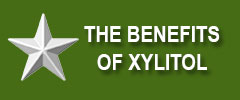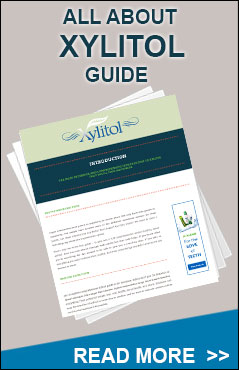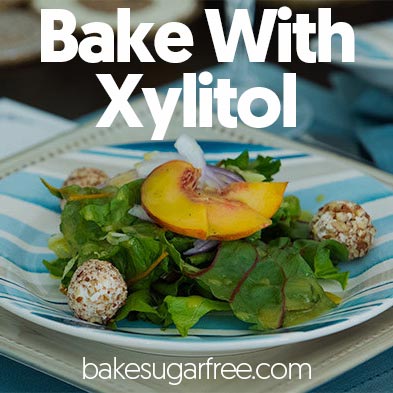Sugar By Any Other Name
Presenter: Dr. John Peldyak
Dr. Peldyak uses visual aid chains to illustrate the many types of sugar chains, and why xylitol functions differently than fructose, glucose, dextrose, and other 6-carbon molecules. As a 5-carbon molecule, xylitol has a smooth surface with a lack of bonding sites.
Video Transcription
I really should say “sugars” by other names. When we say sugar, we’re talking generally about this, the sugar cube, this sucrose sugar. That “-ose” ending, if you look on food labels or packages sometimes, the “-ose” ending are major dietary sugars: glucose, fructose, sucrose, lactose. Sucrose is ordinary table sugar, lactose is milk sugar, and glucose and fructose, you’ll see those also. Dissolve sugars in water and you get a syrup: honey, agave, and maple syrup are example of syrup—sugars dissolved in water. Corn syrup is very important for our industrial food chain production. High Fructose Corn Syrup—we’ll talk about that one also. Then there’s starch and Maltodextrin. Now, starch and maltodextrin, they’re not “starch-oses” or “maltodextrin-oses,” but you see them on package labels all the time. So what are these?
Let’s go ahead and look at that. Again, we have our chain of starch. If I extend this chain out, and these are glucose polymer starch, if I were to extend this chain out to 200-1000 glucose units it would be a typical starch molecule, the straight chain would by amylase; the branched chain would be amylopectin. These sugar beads—you can take your little string out there too. They’re nice because you can pop them into the individual sugars, this is just glucose. You just link glucose together in a long chain, and you get this starch molecule. What’s important about this is this can be broken down—hydrolyzed, in water with heat, or acid, or enzymes, to break the starch down into the individual sugars. So the more you cook this and process it and break it up and break it apart, the more available it’s going to be as sugar in the mouth. We also have enzymes in the mouth, the amylase enzyme, very efficient at breaking these molecules apart, and then you’ve got sugar floating around in your teeth. So it doesn’t say sugar on the label; it doesn’t say sugar in a mashed potato, or a bowl of rice, or cornflakes, or a cereal bar or granola bar, but when this stays on the teeth and breaks down, you’ve got sugar on your teeth.
So, what’s the maltodextrin? The maltodextrin I could break off—let’s say I pop off ten of these—what’s interesting is that this is a maltodextrin molecule. Oligosaccharide is smaller than what they generally call a starch or polysaccharide, but you’ll see this on food labels everywhere, because this is one of those ingredients that’s inexpensive, it’s a good filler. They just put it in everything. So if you just look at your package labels of processed food, you’ll see maltodextrin all over the place, anywhere from 3-20 of these glucose units. This falls apart very quickly on the teeth into individual glucose molecules, and you’ve got sugar on your teeth again.
The neat thing about sugar is you can take them apart, and you can put them together. What do bacteria do on the teeth? They can use the sugar for energy, just the way we do. You don’t need energy, let’s say we have enough sugar in our system and we don’t need energy, what do we do with the sugar? We reassemble it into something like this with branches on it, called glycogen. That’s a storage form of sugar. On our teeth, we reassemble it into the extracellular polysaccharide that we’re talking about, the sticky stuff that holds the plaque together. So the bacteria use what they need for energy, and reassemble the rest as that polymer matrix to keep the biofilm going. If you’re playing with your pop-its, you can pop off a maltose molecule, pop them again and you have glucose, reassemble them into maltose, maltodextrin, and put all our beads together and we have a starch molecule. You get the idea; it’s all sugar.
Ok, fructose. We’ve got another little pop-it in our bag. It’s not really fructose; we’ll let it represent. The map is not the territory; the menu is not the meal. We’ll use the knobbly one to represent fructose. Six carbons, again. We were talking earlier—six carbons, you put them together, disaccharides, twelve carbons. Put a fructose and a glucose together, you get sucrose. Sucrose is considered the most damaging sugar for teeth. This is sucrose, ordinary table sugar, and it’s comprised of the fruit sugar, fructose, and glucose, which is blood sugar. You put them together, you get sucrose. Why is sucrose so cariogenic? Why is it so bad for teeth? Because—snap your pop-its apart—oh, they get energy out of that. The bacteria, the acid germs get energy out of that bond, and then they still have the individual pieces to enjoy, and if they don’t need the energy at the time, they can reassemble these pieces into that sticky plaque matrix that we were talking about. So sucrose is extremely damaging for teeth.
I did mention corn syrup. What is corn syrup? Basically glucose dissolved in water, for the most part. Also pieces of glucose. High fructose corn syrup—what do they do? First they hydrolyze—break apart the starch molecules into individual glucose molecules. They take a glucose molecule, and with the help of an enzyme, convert some of it to fructose, so you have a mixture of glucose and fructose, and industrially it’s available anywhere from HFCS42, they call it, HFCS95, and that refers to how much fructose is in the mix. Mostly they’re using HFCS55 in the Coca Colas and products like that, so you’re getting essentially the breakdown products of sucrose in High Fructose Corn Syrup, a sort of pre-digested sucrose. In your treasure box here, there should be a smooth stone in there that we’ll use to represent xylitol.
The neat thing about the xylitol molecule is there are no readily available bonding sites on there—it feels nice and smooth. The xylitol molecule doesn’t have a highly active or reactive carbonyl group, which is the double bond to oxygen. All the bonds are pretty well satisfied. So the smooth lack of bonding sites doesn’t fit very easily onto the chain. It doesn’t help propagate the plaque chain. The smaller these chains are, the more soluble they are, they break apart more easily. They’re not going to cause as much harm. That’s one way that xylitol works. The molecules—I could pass these around—the difference between a sorbitol and a xylitol molecule. Let’s start with our professors here so if there is a mistake, they can correct it on the way around. Xylitol as opposed to sorbital, sorbital is 6-carbon, in that same 6-carbon group, all of these sugars: 6-carbon. Our dietary sugars are based on a 6-carbon saccharide molecule. Xylitol is different. Xylitol is 5-carbon. Bacteria don’t like it as much, or at all.
What are high intensity sweeteners? They are much, much sweeter than sugar, high intensity sweeteners (example: sucralose, aspartame, saccharin, even certain plant extracts the stevioside androbusoside have been recently approved now for use in the U.S.). Take out your little packets of artificial sweetener. We have a pink, blue, and yellow. Let’s look at the ingredients on there. What’s the first ingredient that you see? Dextrose. What’s dextrose? Dextrose is glucose. Glucose, dextrose, same thing: six carbon sugar. Next one is maltodextrin. We just talked about maltodextrin: a short chain of glucose molecules. So if you put that in your coffee, or tea, you’re sipping on a sugar solution. We talked about the number of exposures you get to sugar in the course of a day. I think most people believe they’re being sugar-free if they use these packets. They’re not. They’re still sipping on a sugar solution when they put these in their beverages.




